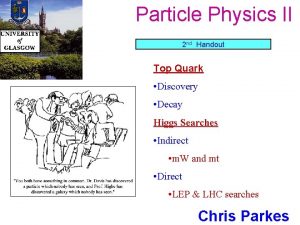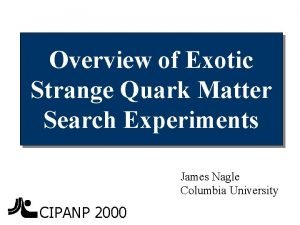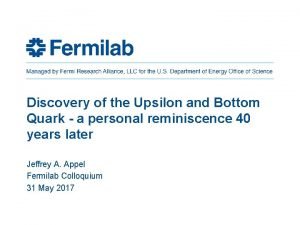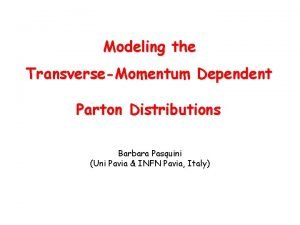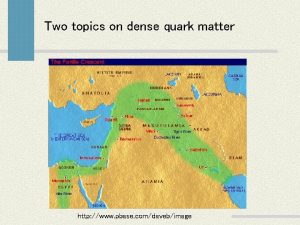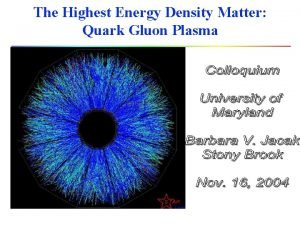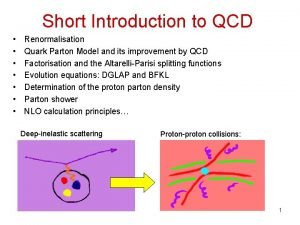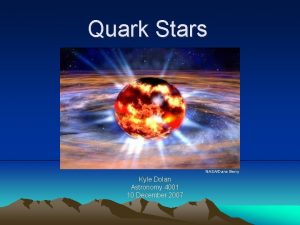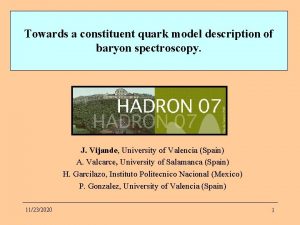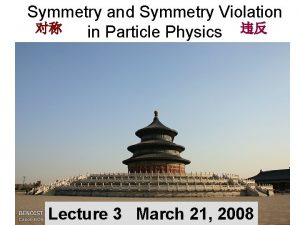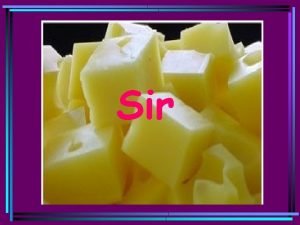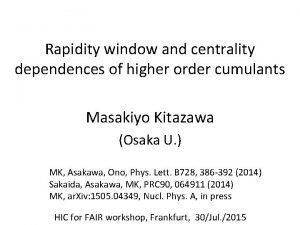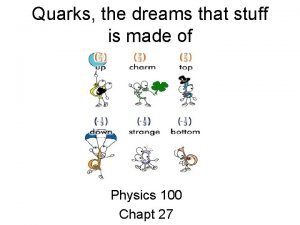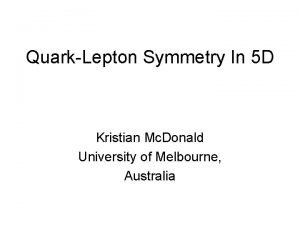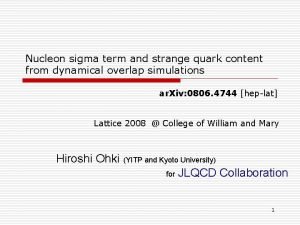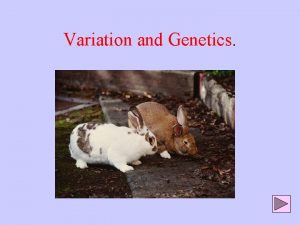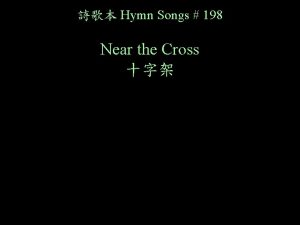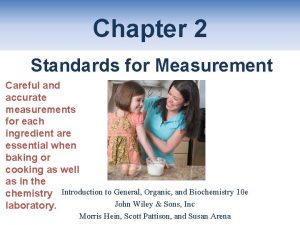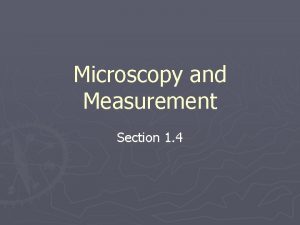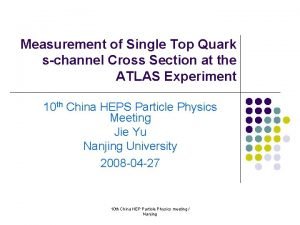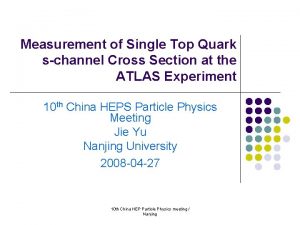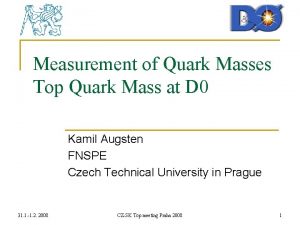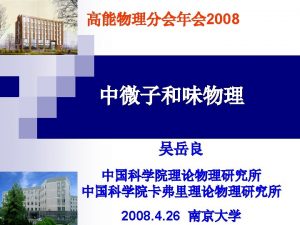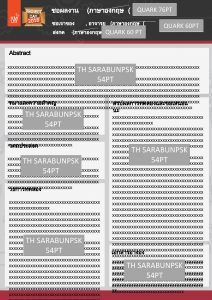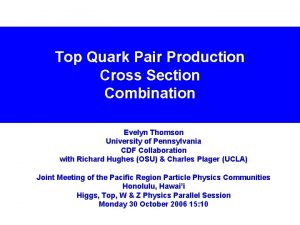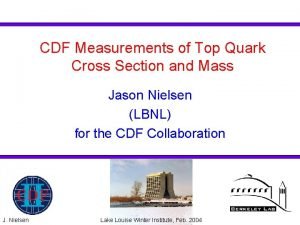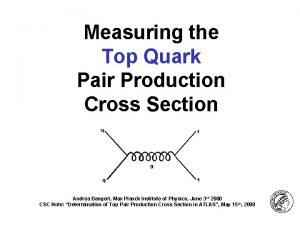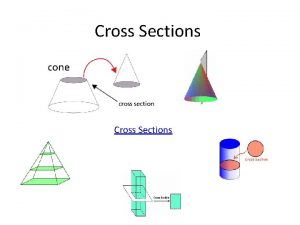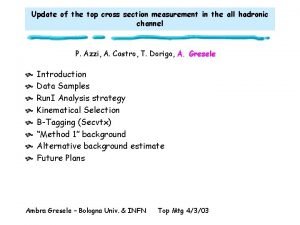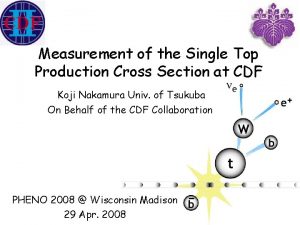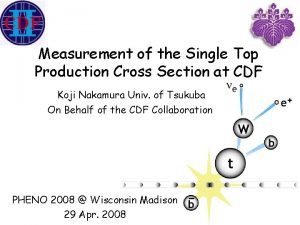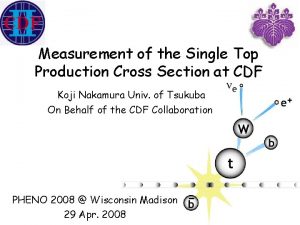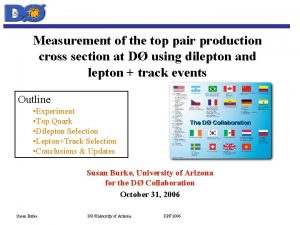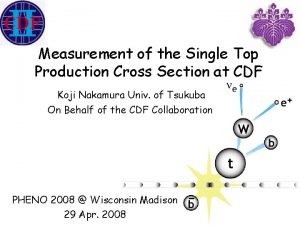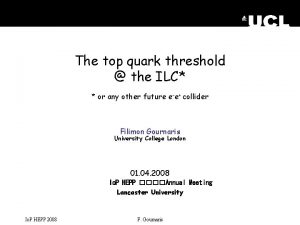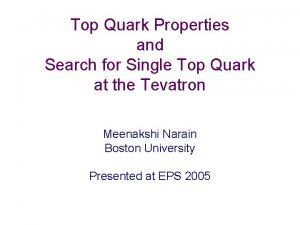MEASUREMENT OF THE TOP QUARK CROSS SECTION IN
































- Slides: 32

MEASUREMENT OF THE TOP QUARK CROSS SECTION IN THE TAU+JETS CHANNEL William P. Edson, Teeba Rashid, Dr. Sajjad Alam 1 Dr. Dick Greenwood, Anirvan Sircar 2 Dr. Patrick Skubic, Dr. Muhammad Saleem, Dr. Brad Abbot, Dr. Phil Gutierrez, Christopher Walker, David Bertsche 3 Dr. Serban Protopopescu 4 1: State University of New York at Albany 2: Louisiana Tech University 3: University of Oklahoma 4: Brookhaven National Laboratory Dec. 20 th 2013 1

Overview � � � Physics Channel Analysis Samples Object Selection Event Selection Tau Selection QCD Multijet Template method Ensemble Tests Linearity Test Results Systematic Uncertainties Previous Question Responses � Conference Note: http: //cds. cern. ch/record/1627649 2

Physics Channel b g g t t g q’ W+ q τ Wb ντ Top Pair Branching Fractions for ttbar decays[1] 3

Process Samples Generator Data 2011 Samples 4. 6 fb-1 (_p 822) ttbar semileptonic MC@NLO 105200 W(lνl) + jets Alpgen 107680 -107685 (eνe) 107690 -107695 (μνμ) 107700 -107705 (τντ) W(bb) + jets Alpgen 107280 -107283 Z(ll) + jets Alpgen 107650 -107655 (ee) 107660 -107665 (μμ) 107670 -107675 (ττ) Z(ll)bb + jets Alpgen 109300 -109303 (ee) 109305 -109308 (μμ) 109310 -109313 (ττ) WW Herwig 105985 ZZ Herwig 105986 WZ Herwig 105987 Single top (t-channel) Acer. MC 117360 -117362 Single top (s-channel) MC@NLO 108343 -108345 Single top (Wt) MC@NLO 108346 4

Object Selection q Trigger: § § q Jets: § § q Tau 29_medium_xe 35_no. Mu (B-K) Tau 29 T_medium_xe 35_no. Mu_3 L 1 J 10(L-M) anti-kt algorithm reconstructed PT > 20 Ge. V JVF > 0. 75 |η| < 2. 5 Tau: § § § anti-Kt jets PT > 40 Ge. V |η| < 2. 3 tau_Ele. BDTMedium != 1 tau_muon. Veto != 1 5

Event Selection Cut Description Cut 0 Event Cleaning: GRL and lar. Error ≠ 2 Cut 1 Trigger (See Slide 5) Cut 2 Primary vertex with ntrk > 4 Cut 3 LAr FEB Cut 4 Event Cleaning: All Good Jets Cut 5 Njets ≥ 4 Cut 6 Selected tau (See Slide 7) with PT > 40 Ge. V with Tight Likelihood OR Tight BDTJet. Score selection Cut 7 Lepton Veto Cut 8 MET > 60 Ge. V Cut 9 MTW < 80 Ge. V (See Slide 10) Cut 10 Nbjets ≥ 1 with MV 1 > 0. 60 Cut 11 tau PT < 120 Ge. V 6

Tau Selection If more than 1 tau candidate following object selection: � Check for number of prongs per candidate � multiple 1 -prongs, event is rejected � single 1 -prong present , proceed using this tau for analysis � else (only 3 -prong) use highest BDTJetscore tau for analysis other 3 -prong taus are kept as jets 7

QCD Multijet Template Mthod � Templates for the MET and dijet mass are constructed for three cases: � 1 -prong reconstructed taus � 3 -prong reconstructed taus � Combined 1 and 3 -prong Base. Line: § Full Event and Tau Selection Control: § Full Event Selection §Tau Identification passing either (depending on OR criteria event passes): § Likelihood > -40 § BDTJet. Score > 0. 1 §AND not passing Tight selection for same tau. ID 8

QCD Multijet Template Method contd. � Template for QCD taken as the shape difference in the concatenated MET and dijet mass histograms for Data control sample with the control samples from MC: � ttbar semileptonic � W + jets � Z + jets � single top � diboson �

MTW < 80 Ge. V Distribution of MTW from signal and Multijet control sample demonstrating the contribution of fakes in control sample and real τ in signal distribution 10

Ensemble Tests q q Pseudo data was created using constant fraction for other MC backgrounds and varying signal fractions (0. 2 to 0. 7 in steps of 0. 1) For each signal fraction, the bin content was randomized for templates for Signal and other MC backgrounds from baseline samples and QCD from the control samples The three randomized templates coming together formed the pseudo data The procedure was repeated 10, 000 times for each fraction resulting in a histogram for each fraction which could be fit to a Gaussian 11

Ensemble Test Result Examples Input Signal Fraction: 0. 2 Input Signal Fraction: 0. 7 Remaining result histograms included in Back up slides 27 and 28 12

Linearity Test q. The Gaussian mean values and errors (y) of the Ensemble test runs were plotted versus their corresponding input fraction (x) with the resulting linear fit below: 13

Resulting Fractions from Fit Type Combined (1 & 3 -prong) 1 -prong 3 -prong Signal 0. 490 ± 0. 034 0. 550 ± 0. 050 0. 417 ± 0. 050 QCD multijet 0. 310 ± 0. 030 0. 198 ± 0. 039 0. 432 ± 0. 050 Other MC backgrounds 0. 200 ± 0. 003 0. 260 ± 0. 001 0. 147 ± 0. 001 Fit Result of Data to Signal MC, QCD Multijet, and other MC Backgrounds for concatenated MET & Mjj 14

Data Fit with Results Including Signal and all Backgrounds Both plots are for the combined 1 & 3 -prong case 15

Data Fit with Results Including Signal and all Backgrounds contd. Both plots are for the combined 1 & 3 -prong case Additional comparison plots using other variables found in backup slides 29 and 30 16

Signal and QCD Output � Signal and QCD output event count result are determined using the output fractions from the fitting analysis � � 17

Tau case Remaining Events Signal: Single top W+ jets Z+ jets Diboson QCD Sum Data Combined (1 & 3 -prong) 1 -prong 3 -prong What about the semileptonic non-tau ttbar decays? 18

Results � Combined (1 & 3 -prong): � � 1 -prong: � � 3 -prong: � � � SM NNLO prediction: 173. 3 Ge. V [2] Nik. HEF Result [3]: for top mass of � 19

Systematic Uncertainties for Combined Result 20

Systematic Uncertainties � 1 -prong � 3 -prong 21

Previous Comments (11/15/2013) � � Correlations in fit variables: In the fit you have three variables (MET & the three mass variables), how you deal with the statistical correlation between these variables in the fit? � � � MC generator uncertainty: It would be good to understand in detail what drives the large generator uncertainty - is it change in acceptance or changes in the shapes of the fitted distribution? � � � Previous Generator error results were due to the use of incorrect scale factors in normalization and some ALPGen files are currently missing from our sample QCD background: It would be good to present the details of the uncertainties on the QCD background they are quite small, so we need to be sure they are reliable. Could you run a closure test of your QCD background method on some QCD MC? � � Analysis switched from four to two variables (MET and dijet mass) which still show good agreement Still to come Consistency: We need to understand better the consistency between the two results. � The two independent methods have been combined into one OR method. 22

Future Plans � � � Aiming for paper for the winter conference Editorial Board desired for publication Conference Note: http: //cds. cern. ch/record/1627649 23

Acknowledgements � � � � Dr. Patrick Skubic Dr. Muhammad Saleem Dr. Brad Abbot Dr. Phil Gutierrez Dr. Dick Greenwood Christopher Walker Dr. Serban Protopopescu 24

References 1) 2) 3) Neil Collins, Top. Cross Section (Current Status and Early LHC Prospects). 10 March 2010. M. Czakon, P. Fiedler, and A. Mitov, The total top quark pair production cross-section at hadron colliders through O(αS 4), ar. Xiv: 1303. 6254 [hep-ph]. ATLAS Collaboration, Measurement of the ttbar production cross section in the tau+jets channel using the ATLAS detector, ar. Xiv: 1211. 7205 v 2 [hep-ex]. 25

Back up 26

Ensemble Test Result Examples contd. Input Signal Fraction: 0. 3 Input Signal Fraction: 0. 4 27

Ensemble Test Result Examples contd. Input Signal Fraction: 0. 5 Input Signal Fraction: 0. 6 28

Data Fit with Results Including Signal and all Backgrounds contd. Both plots are for the combined 1 & 3 -prong case 29

Data Fit with Results Including Signal and all Backgrounds contd. Both plots are for the combined 1 & 3 -prong case 30

Resulting Fractions from using Likelihood and BDT Analyses Individually Likelihood Analysis (Analysis A): Type Combined (1 & 3 -prong) 1 -prong 3 -prong Signal 0. 463 ± 0. 038 0. 510 ± 0. 054 0. 419 ± 0. 056 QCD multijet 0. 320 ± 0. 034 0. 227 ± 0. 046 0. 422 ± 0. 052 Other MC backgrounds 0. 217 ± 0. 004 0. 270 ± 0. 001 0. 160 ± 0. 002 BDT Analysis (Analysis B): Type Combined (1 & 3 -prong) 1 -prong 3 -prong Signal 0. 528 ± 0. 041 0. 564 ± 0. 055 0. 495 ± 0. 064 QCD multijet 0. 252 ± 0. 035 0. 168 ± 0. 045 0. 350 ± 0. 057 Other MC backgrounds 0. 218 ± 0. 003 0. 264 ± 0. 002 0. 154 ± 0. 001 31

Results � Analysis A � Combined (1 & 3 -prong): � 1 -prong: � 3 -prong: � Analysis B � Combined (1 & 3 -prong): � 1 -prong: � 3 -prong: 32
 Top quark decay
Top quark decay Particle wordle
Particle wordle Quarks
Quarks Quark names
Quark names Quark model
Quark model Quark gluon
Quark gluon Quark gluon
Quark gluon Quark parton model
Quark parton model Quark astronomy
Quark astronomy Quark gluon
Quark gluon Quark names
Quark names Constituent quark model
Constituent quark model A charm quark has a charge of approximately
A charm quark has a charge of approximately Dimsi sir
Dimsi sir Quark gluon plasma
Quark gluon plasma Quark types
Quark types Quark lepton symmetry
Quark lepton symmetry Sigma quark composition
Sigma quark composition Quark matter 2022
Quark matter 2022 Test cross and back cross
Test cross and back cross Test cross and back cross with example
Test cross and back cross with example Codominance definition
Codominance definition Difference between dihybrid and monohybrid cross
Difference between dihybrid and monohybrid cross In the cross, in the cross be my glory ever
In the cross, in the cross be my glory ever Condylar guidance
Condylar guidance Chapter 8 section 1 what are earthquakes
Chapter 8 section 1 what are earthquakes Section 2 standards of measurement answer key
Section 2 standards of measurement answer key Microscopy and measurement section 1-4 review
Microscopy and measurement section 1-4 review Hát kết hợp bộ gõ cơ thể
Hát kết hợp bộ gõ cơ thể Bổ thể
Bổ thể Tỉ lệ cơ thể trẻ em
Tỉ lệ cơ thể trẻ em Chó sói
Chó sói
